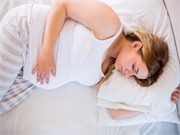Review and meta-analysis ID 30 factors that raise risk for child psychosis, five factors that protect
FRIDAY, March 27, 2020 (HealthDay News) — Prenatal and perinatal factors may influence a child’s risk for developing psychosis, according to a review and meta-analysis published online March 24 in The Lancet Psychiatry.
Cathy Davies, Ph.D., from King’s College London, and colleagues conducted a systematic literature review to identify studies evaluating the association between prenatal or perinatal risk and protective factors and psychotic disorders.
The researchers identified 152 eligible studies evaluating 98 risk or protective factors. Significant risk factors were: maternal age <20 years (odds ratio [OR], 1.17) or 30 to 34 years (OR, 1.05); paternal age <20 years (OR, 1.31) and >35 years (OR, 1.28); any maternal (OR, 4.60) or paternal (OR, 2.73) psychopathology; maternal psychosis (OR, 7.61) and affective disorder (OR, 2.26); three or more pregnancies (OR, 1.30); herpes simplex 2 (OR, 1.35); maternal infections not otherwise specified (NOS; OR, 1.27); suboptimal number of antenatal visits (OR, 1.83); winter (OR, 1.05) and winter to spring (OR, 1.05) season of birth in the northern hemisphere; maternal stress NOS (OR, 2.40); any famine or nutritional deficits in pregnancy (OR, 1.40); maternal hypertension (OR, 1.40); hypoxia (OR, 1.63); ruptured (OR, 1.86) and premature rupture (OR, 2.29) of membranes; polyhydramnios (OR, 3.05); definite obstetric complications NOS (OR, 1.83); birthweights <2,000 g (OR, 1.84), <2,500 g (OR 153), or 2,500 to 2,999 g (OR, 1.23); birth length <49 cm (OR, 1.17); small for gestational age (OR, 1.40); premature birth (OR, 1.35); and congenital malformations (OR, 2.35). Significant protective factors were fewer and included maternal ages 20 to 24 years (OR, 0.93) and 25 to 29 years (OR, 0.92); nulliparity (OR, 0.91); and birthweights 3,500 to 3,999 g (OR, 0.90) or >4,000 g (OR, 0.86).
“The updated knowledge emerging from this study could refine understanding of psychosis pathogenesis, enhance multivariable risk prediction, and inform preventive strategies,” the authors write.
One author disclosed ties to a pharmaceutical company.
Copyright © 2020 HealthDay. All rights reserved.








